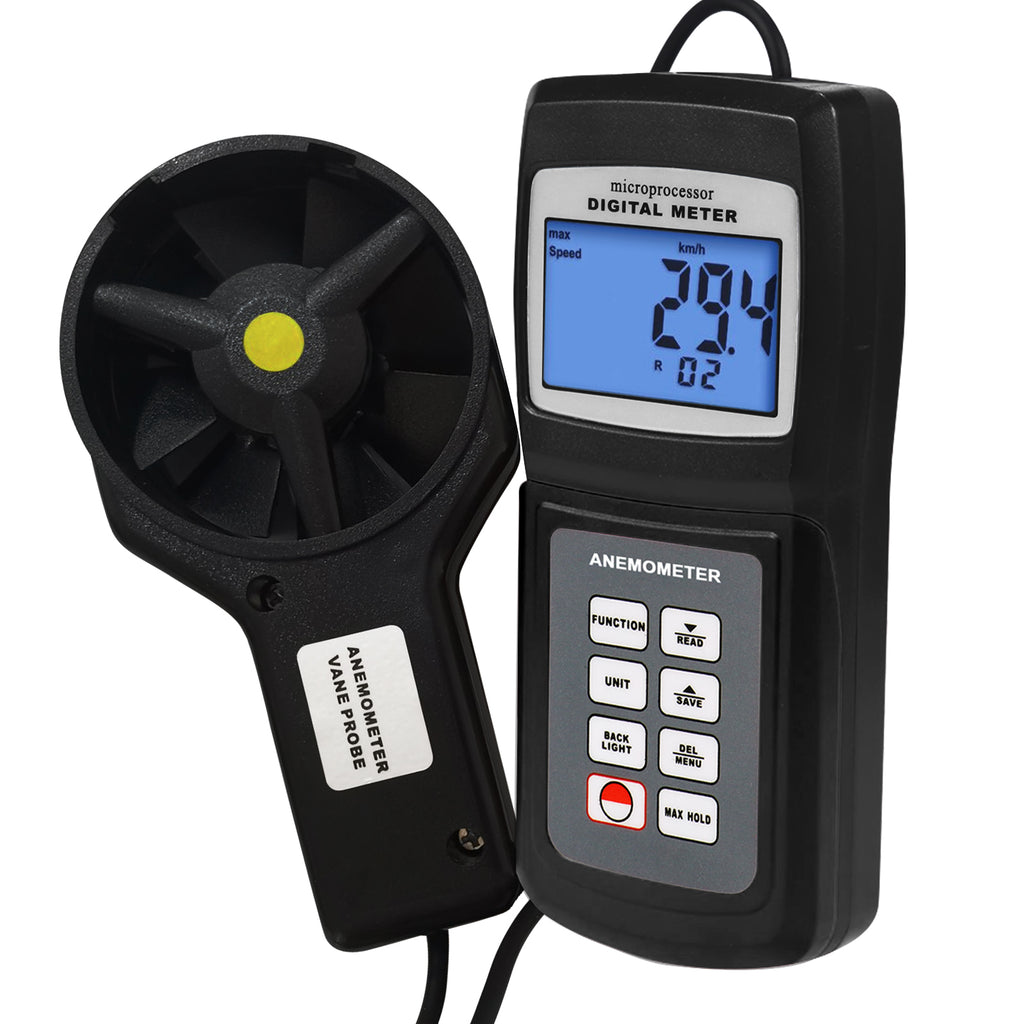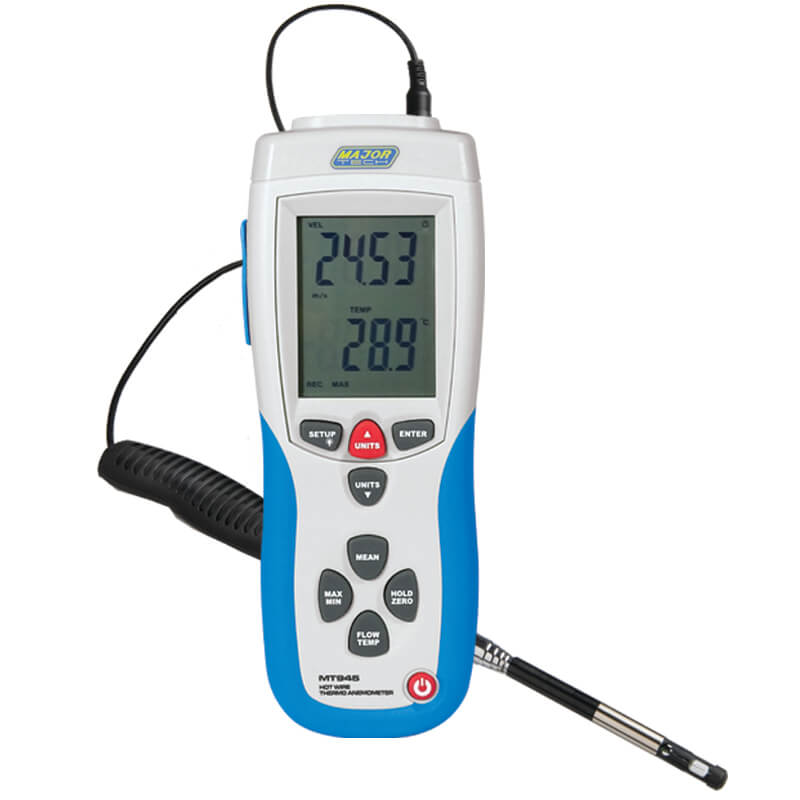The Duty of an Anemometer in Improving Security for Outdoor Activities
The Duty of an Anemometer in Improving Security for Outdoor Activities
Blog Article
All You Need to Understand About Anemometers: Exactly How They Work, Why They Matter, and Where to Use Them
Anemometers, however often neglected in the world of scientific instruments, play a critical role in numerous fields, providing useful insights right into wind speed and air movement patterns. As we dive right into the complexities of anemometer innovation, we will certainly reveal the inner functions of these devices, their significance, and the vital factors to consider when picking the ideal anemometer for details applications.

Anemometer Fundamentals
An essential instrument utilized to measure wind rate and instructions, the anemometer plays an important role in weather forecasting and various markets. An anemometer usually includes three or 4 mugs that revolve in the wind, a vane that points right into the wind, and sensing units to track the turnings or activities. By computing the rotations or activities over a certain time period, the anemometer can determine wind rate. The vane assists figure out wind instructions by directing right into the wind, supplying important information for weather projecting, aeronautics, maritime procedures, ecological monitoring, and wind power applications.
There are various types of anemometers offered, including mug anemometers, vane anemometers, hot-wire anemometers, and sonic anemometers, each with its special attributes and applications. Mug anemometers are typically made use of for standard wind speed measurements, while vane anemometers are liked for directional measurements.
Principles of Anemometer Operation
Structure on the fundamental understanding of anemometer basics, the concepts of anemometer operation elucidate the auto mechanics behind wind rate and direction dimensions. Anemometers run on the principle of air movement affecting a sensor, triggering it to rotate. Cup anemometers, as an example, have 3 or even more mugs that record the wind, triggering them to spin faster as the wind rate boosts. The turning speed is then exchanged a wind speed measurement. Vane anemometers, on the other hand, make use of a tail or a probe that straightens itself with the wind instructions, giving a measurement of wind direction based on the orientation of the sensor. Hot-wire anemometers depend on a heated cord that cools as wind overlooks it, with the price of cooling determining the wind rate. Ultrasonic anemometers procedure wind speed and instructions by assessing the moment it takes for ultrasonic signals to travel between transducers. Understanding these principles is vital for trustworthy and precise wind dimensions in various applications.
Importance of Anemometers
The significance of anemometers in meteorology and numerous industries can not be overemphasized. Anemometers play a vital duty in measuring wind rate and instructions, offering necessary information for weather forecasting, environment research studies, ecological monitoring, and aviation operations. Meteorologists count on anemometers to collect exact wind data, helping get redirected here them understand weather patterns, forecast tornados, and issue prompt warnings to the public. In markets such as building, agriculture, renewable resource, and maritime operations, anemometers are used to enhance processes, make sure safety, and raise performance. For instance, wind farm operators use anemometers to evaluate wind problems and make the most of electrical power production from wind turbines. In the maritime industry, anemometers help ship navigating by giving real-time wind details to captains, assisting them make informed decisions to make sure safe trips. In general, anemometers are important tools that contribute considerably to security, performance, and informed decision-making in meteorology and a wide variety of industries.
Applications Throughout Different Industries
Applications of anemometers cover throughout diverse markets, showcasing their convenience and utility beyond meteorology. In the renewable resource sector, anemometers play an essential function in examining wind problems for wind farm placements, ensuring optimum power manufacturing. Industries like building and construction and mining use anemometers to monitor wind rates, crucial for safety and security protocols, especially when functioning at heights or in find more info open-pit mines where solid winds can present dangers. Anemometers are also essential in the aeronautics sector, helping pilots in comprehending airspeed and wind instructions for risk-free liftoffs and landings. The maritime market take advantage of anemometers for ship navigating, assisting sailors anticipate climate changes and readjust paths accordingly. In agriculture, anemometers aid farmers in handling plant splashing by offering real-time information on wind speed to prevent drift. Furthermore, anemometers discover applications in cooling and heating systems to maximize air flow and boost power efficiency in structures. The varied usage situations of anemometers highlight their significance across various industries, highlighting their crucial role in boosting operational security and effectiveness (anemometer).

Picking the Right Anemometer for Your Demands
For basic purposes, a cup anemometer is ideal for determining wind speed, while a vane anemometer offers wind instructions information. Hot-wire anemometers are optimal for low airspeed dimensions, and ultrasonic anemometers use high accuracy and longevity.

Final Thought
In final thought, anemometers play an important duty in determining wind speed and direction throughout different industries. It is essential to think about the significance of anemometers in order Read Full Report to make informed choices when choosing the most suitable tool for gauging wind problems.
There are different kinds of anemometers available, including mug anemometers, vane anemometers, hot-wire anemometers, and sonic anemometers, each with its distinct attributes and applications. Mug anemometers are commonly used for standard wind speed dimensions, while vane anemometers are favored for directional measurements. Hot-wire anemometers are suitable for reduced airspeeds, and sonic anemometers are perfect for high-precision measurements in research and commercial settings.Structure on the foundational understanding of anemometer essentials, the concepts of anemometer procedure illuminate the auto mechanics behind wind rate and instructions dimensions. For basic functions, a mug anemometer is ideal for gauging wind rate, while a vane anemometer offers wind instructions data.
Report this page